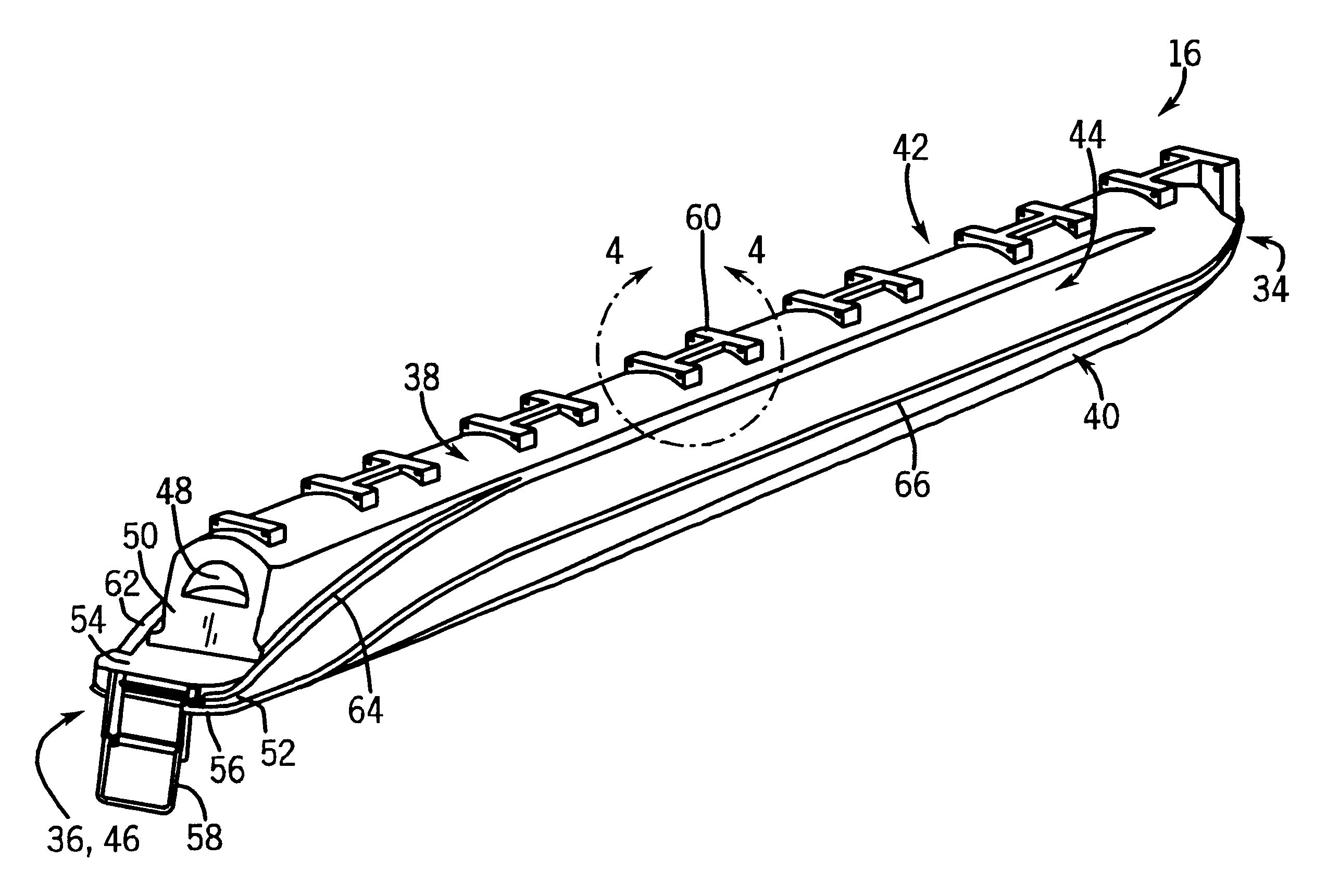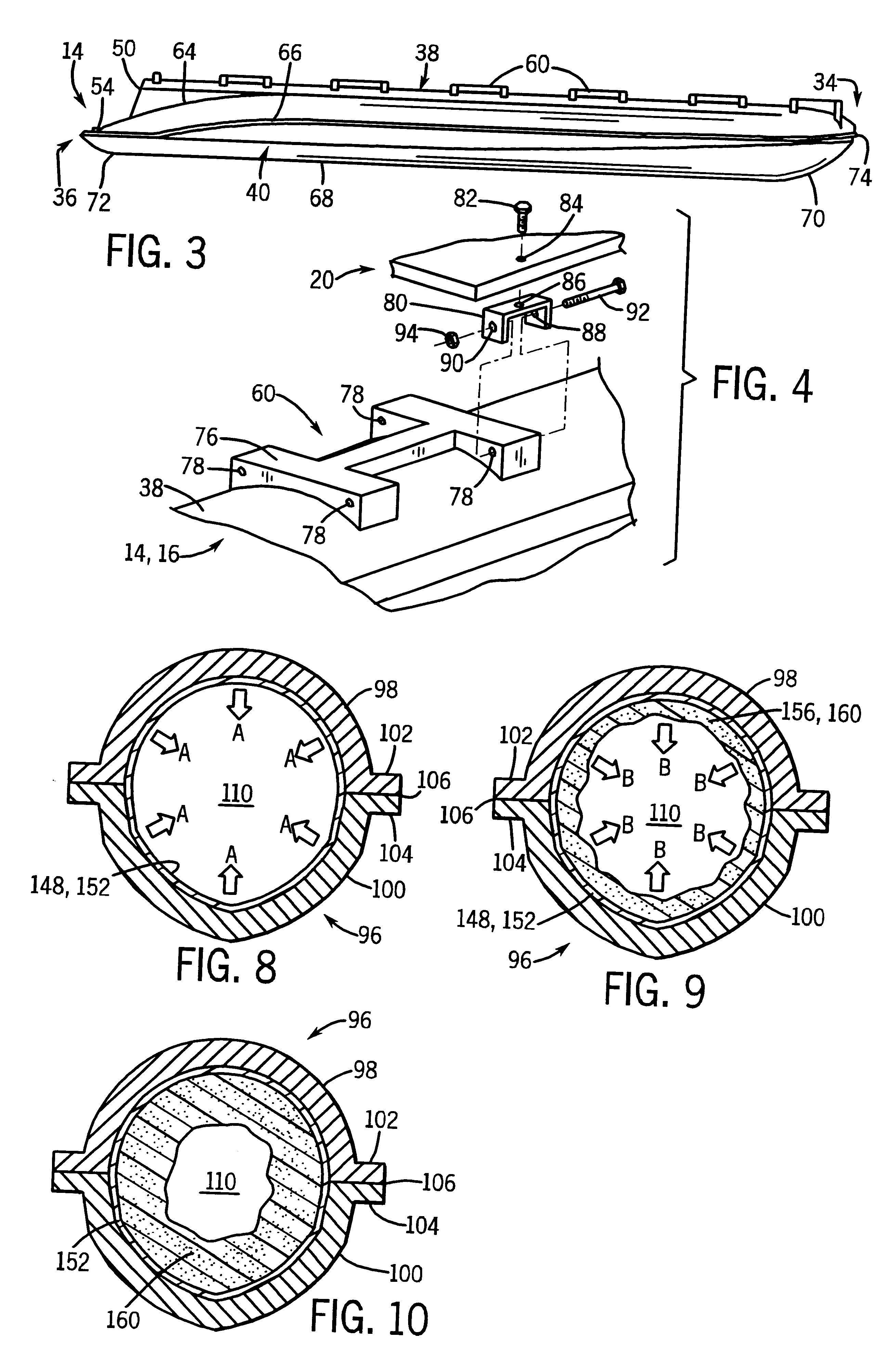Pontoon watercraft and method for making same
a technology of watercraft and pontoon, which is applied in the field of pontoon watercraft and flotation techniques, and can solve the problems of large volume of structures, limited contours and configurations, and prone to leakage and ro
- Summary
- Abstract
- Description
- Claims
- Application Information
AI Technical Summary
Problems solved by technology
Method used
Image
Examples
Embodiment Construction
Turning now to the drawings and referring first to FIG. 1, a watercraft 10, in the form of a recreational boat, is illustrated that includes certain components fabricated in accordance with the present technique. As illustrated, the watercraft 10 has a deck structure 12 coupled to pontoons 14 and 16. Advantageously, the pontoons 14 and 16 may both be manufactured as a skin-foam structure according to the technique described below. Certain components of the deck structure 12 also may be fabricated with the present technique, but in this exemplary embodiment, the deck structure is formed by the more conventional construction techniques.
The deck structure 12, which may embody a variety of configurations and features, generally has a cabin 18 formed by a base 20 and wall sections 22, 24, 26 and 28 extending from the base 20. The cabin 18 may have a variety of fixtures, optional features and configurations, such as benches, tables, storage compartments, openings in the wall sections, rai...
PUM
| Property | Measurement | Unit |
|---|---|---|
| moldable | aaaaa | aaaaa |
| thickness | aaaaa | aaaaa |
| structures | aaaaa | aaaaa |
Abstract
Description
Claims
Application Information
 Login to View More
Login to View More - R&D
- Intellectual Property
- Life Sciences
- Materials
- Tech Scout
- Unparalleled Data Quality
- Higher Quality Content
- 60% Fewer Hallucinations
Browse by: Latest US Patents, China's latest patents, Technical Efficacy Thesaurus, Application Domain, Technology Topic, Popular Technical Reports.
© 2025 PatSnap. All rights reserved.Legal|Privacy policy|Modern Slavery Act Transparency Statement|Sitemap|About US| Contact US: help@patsnap.com



